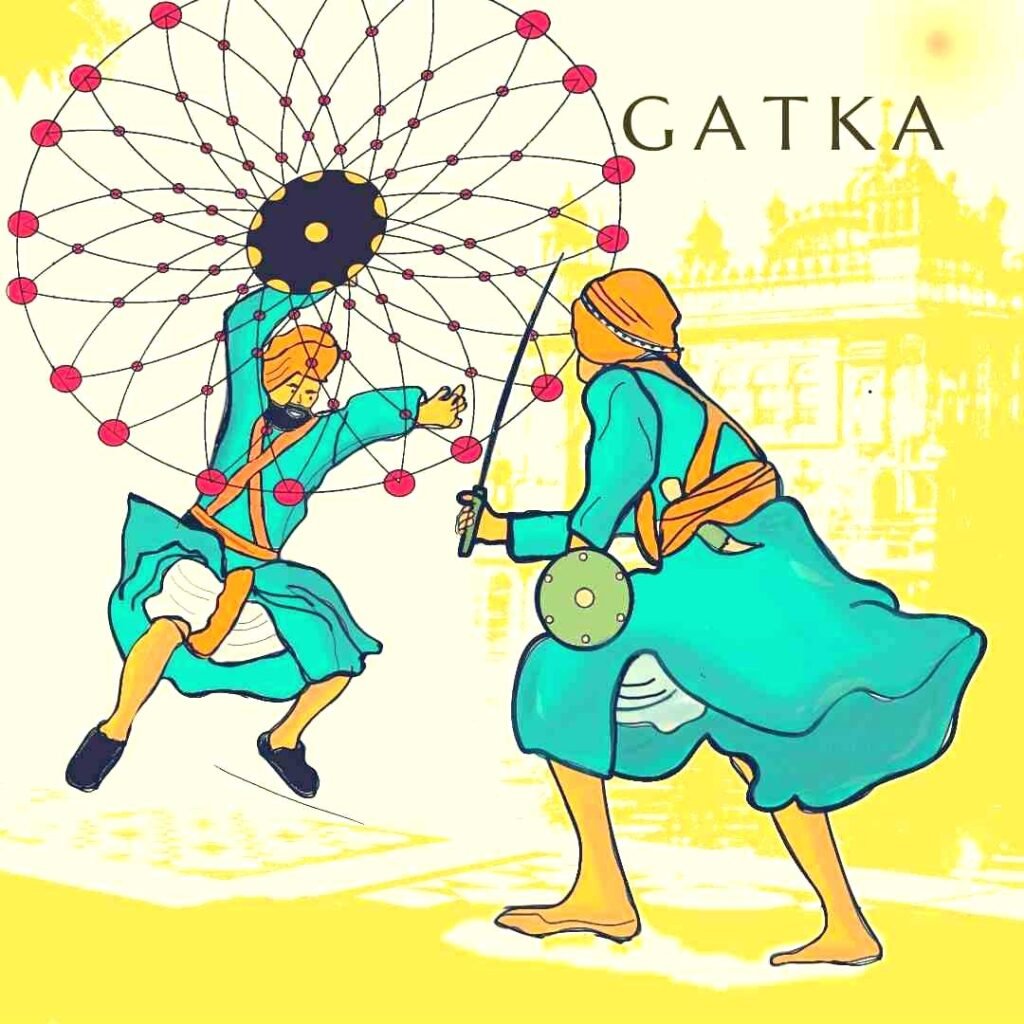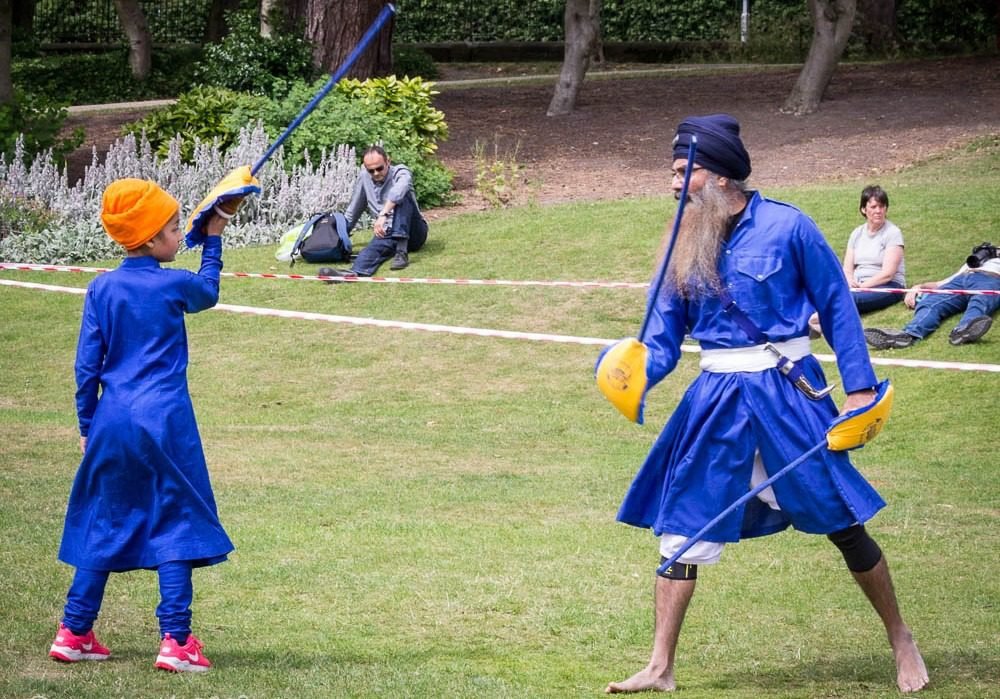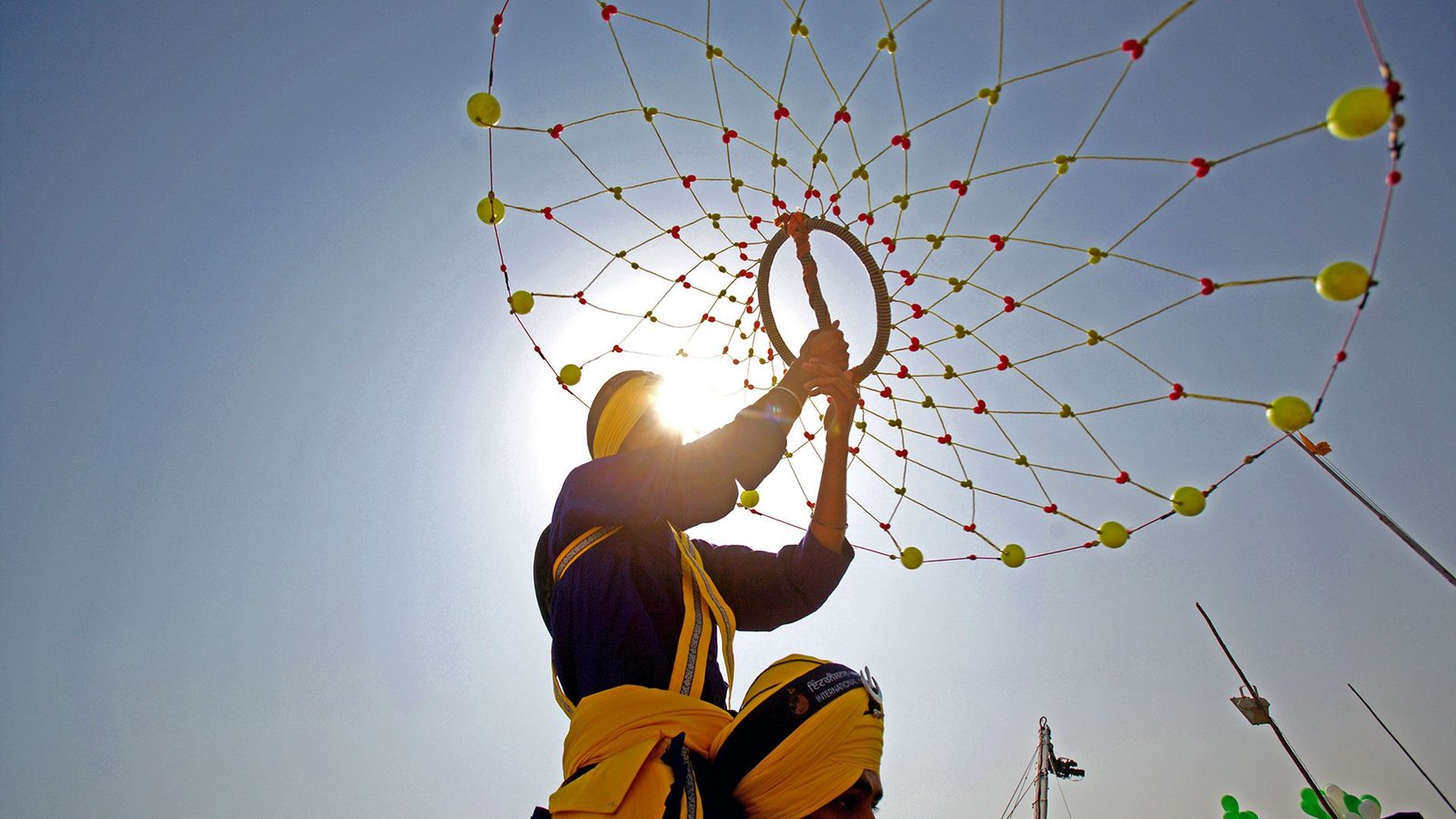GATKA – A Martial Art to Defend and follow the path of Dharma

Gatka is a Sikh martial art that emerged a thousand years ago. It was developed in the 15th century by the Sikh gurus. The martial art form has been handed down from one generation to another via masters or ustaads. The practice takes place in an akhaada which is not specially built or does not have any specific measurements. It is practised on open grounds as the opponents move in a circle, or front or back while attacking each other. Gatka is not only a martial art for self-defence, it has its reason of emergence attached to the need to defend and follow the path of righteousness or dharma. It has its importance attached to the Sikhi concept of Miri Piri as well. Miri Piri symbolises the temporal and spiritual components of life. Miri refers to the temporal authority whereas Piri refers to the spiritual authority wherein defending others lies under Miri. Gatka has been used by the Sikh army since its inception.

The technique adopted in this form of martial arts is by using a wooden stick which is made of wood and is known as a marati. This happens when one gets promoted from bare-handed combat. Its length ranges from 3 to 3.5 feet and the thickness is around 13mm. The place from where the stick is grabbed has a leather covering over it and is often decorated with tassels or other decorative threads. The leather is used to create a grip for the fighter. The stick is accompanied by a shield known as a phari. The shield is round in shape and is small in size, to be precise 9×9 inches. It is made of dry leather and has a filling of dry grass or cotton. The stick is used for practice as the sword is the primary weapon. Duels- armed and unarmed are fought between the opponents.

The technique involved in Gatka not only requires rigorous physical training but also a spiritual discipline. There are verses from the Gurbani which need to be recited. This shapes the moral attitude and moral character of the student. The martial art helps in the unification of the mind, body, and spirit- to make them saint-warriors. To make them proper warriors, the practitioners are taught to fight with different weapons as well as different techniques. There are various kinds of kirpans used as well ranging from Gurj, Thega, Talwar, Standard etc. The shields used with the Kirpans are heavy and come in many sizes.

There are weapons such as chakar which is a metal ring and is not used in action anymore. They were used once upon a time but are now only worn by the fighters either in the kamar kesa or dastars. Just like any other martial art form, Gatka also requires a form, coordination, and method between various body parts and weapons. This is known as Panther and the simultaneous use of both hands makes the practitioner ambidextrous. Gatka is performed in a rhythmic and flowing movement without stopping. There are no strict movements like other martial arts. The turning, attacking, defending and stopping can be done according to the practitioner and the stance as well as the attack mode.

Elements of religion, healing, philosophy and fighting skills are a part of this martial art form. The traditional Sikhs who are known as Nihungs, have kept this martial art form alive and have preserved it over centuries. Nihungs are nomadic and are fully trained in Gatka. They can often be seen performing at fairs or during religious processions taken out during the day of Gurupurab. The ninth guru of the Sikhs, Guru Ten Bahadur Ji, were also a professional in Gatka and the Mughal army had the opportunity to witness his accuracy and speed.
The martial art is not limited by gender or age which also happens to be an important tenet of Sikhi as a religion, that is to not discriminate. Where we see men practising this form, there are women like Gurwinder Kaur who are an inspiration to many women as she is one of the prominent Gatka aficionados. She hails from Panjab and holds a record in the India Book of Records for spinning the Gate chakra 118 times. She provides free Gatka coaching to boys and girls.

The martial art form does not have its fan base limited to Panjab and has a fair share of popularity in other states such as Jammu and Kashmir, Rajasthan, Bihar, Uttar Pradesh, Delhi, and many more. Apart from these Indian states, competitions take place in around 30 countries from all over the world. When these tournaments are fought, they are fought in a span of eight to ten minutes. Each team has to display their skill in 24-25 routines. The rules include the no-contact policy of the Sotis or the bamboo sticks with the feet. They cannot even fall on the ground and should be targeted on a specific part of the opponent’s body. If the attack is not made on the specified part of the body then the attacker has to face a penalty. The size of the Sotis of both the opponents should be of the same size. It is considered a violation if one has a stick longer than the others.
Gatka was included in the national school games in the year 2014 but was removed in the year 2017. The Gate Federation organises and looks over the various tournaments held across the globe. Gatka has also been included in the Khelo India Youth Games by the Government of India. It is one of the three martial art forms to be included. The other two are Klariyapattu and Thang-Ta. In today’s time, one can say that Gatka is being revived and is more popular compared to other martial arts. It survived the ban put on it by the British after the Anglo-Sikh war and still remains one of the top regional martial art forms of India.


